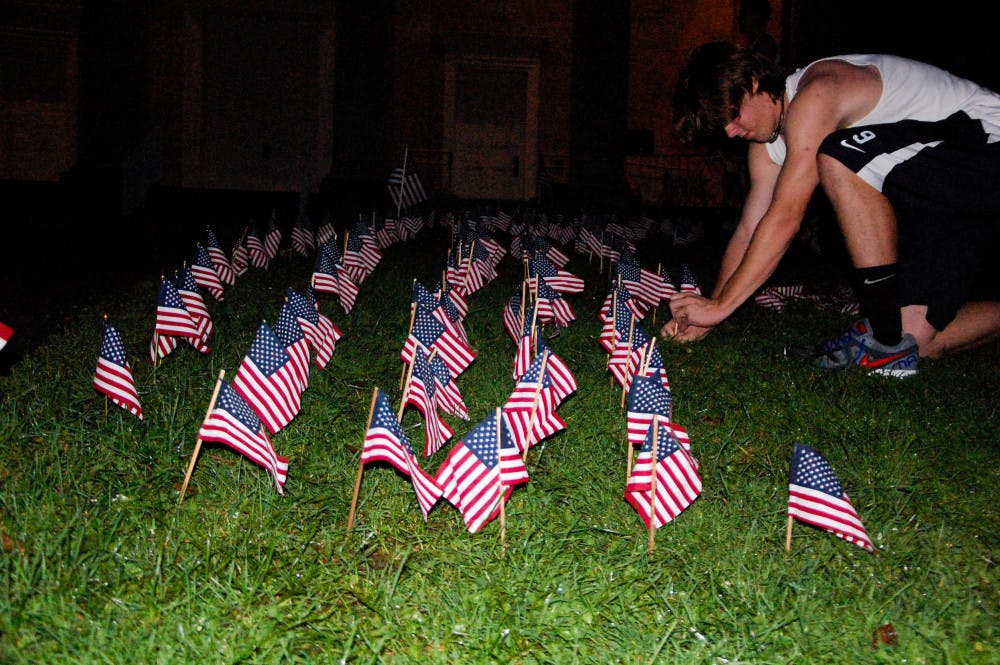On Wednesday, Sept. 11. after a group of five protestors pulled out the 2,977 American flags comprising a memorial to commemorate each of the lives lost in the 2001 terrorist attacks, Sasha Schell ’16, Noah Bakker ’15, and Andrew Catomeris ’15 took it upon themselves to rebuild the memorial.
The three met for dinner that night, and while discussing the incident Catomeris suggested the three of them rebuild the memorial together and called Aubuchon Hardware looking for American flags sold in bulk.
“They were super sympathetic to the idea,” said Catomeris. “They even agreed to stay open late for us.”
Aubuchon only had about 60 flags to offer the students and it cost them about $50, which the students paid for out-of-pocked. Catomeris emphasized, however, “we do not wish to be reimbursed for this sum.”
“At the time the money was not the issue but rather the fact that the memorial was gone,” said Schell.
College Republicans put on the memorial every year in collaboration with College Democrats. In 2007, the Young Republicans Club bought the 2,977 flags with extra funding from the administration. Each year the organization spends about $10 on a few replacement flags. The organization estimated that replacing all of the stolen flags would cost the Young Republicans $500. However, on Monday Sept. 16, the boxes of stolen flags were returned anonymously to the doorstep of the Public Safety office.
Ben Kinney ’15, co-president of College Republicans, worked with Catomeris and the other students that evening to replace the flags.
“That night I got a text message that people were back on campus rebuilding the memorial, so I drove to campus with the flags I had managed to get from the protesters and added the remaining ones to our memorial,” said Kinney.
“The most triumphant moment for us was all the enthusiasm we got from passersby eager to help rebuild the memorial and the unity we all felt,” said Schell.
As angered as students were by the protestors’ behavior, the students The Campus spoke to seemed to strike a balance between feeling angry and using that emotion to right a wrong by rebuilding the memorial.
“Rebuilding the memorial was, I think, a service to the community,” said Schell. “In the same way that the building of it in the first place was a service to those who had lost loved ones in the attacks, replanting them meant that we as a community, found the destruction of the memorial to be deeply offensive. We called our friends to come help, and many passersby simply stopped to help. I think to a lot of people in the community this was a way to remember the tragedy of 9/11 but also quietly voice their opinion that the destruction of the memorial was wrong and deeply offensive.”
The students primarily involved in the rebuilding were not a part of student groups responsible for the memorial, but were students who wanted to take action. Ben Kinney confirmed that since the event, he has received dozens of letters from alumni thanking him for the memorial.
View a Photo Gallery of the replanting or listen to their Thoughts that evening.




